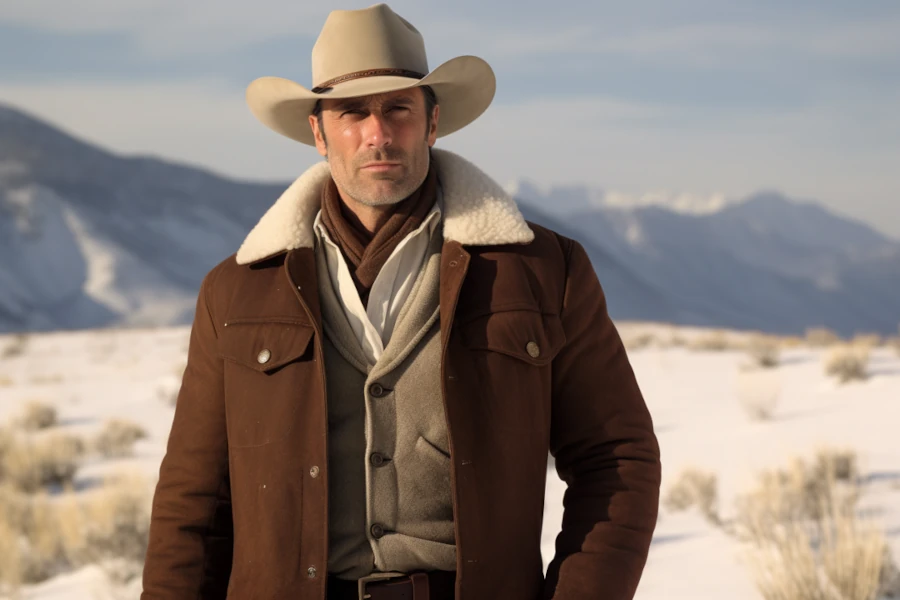Note: Movie links are affiliate links. If you intend to rent any of these through Amazon Prime, please click through and help pay my hosting bill.
Back in 1999, one of my friends stumbled upon the Blair Witch website, which touted the film as a documentary and presented all sorts of fabricated newspaper accounts of the events the film purports to portray. Later that day we went with a group to see a found footage documentary. The experience was unforgettable. Our immense curiosity turned to foreboding and fear as the movie progressed. When the witch attacked the documentarians in the final scene, a member of our group audibly shrieked.
On the way home, packed in the car of some parent, we debated the veracity of what we had just seen. One argued that there’s no way it could be true. Another pointed out that nothing supernatural had to occur, given what we had seen. Somehow, we had this idea that it wouldn’t be legal for them to market it as a documentary if it were all fabricated. Even the kid most stubbornly advancing the theory that we had just witnessed a hoax expected some sort of legal repercussions for the filmmakers.
The Blair Witch Project only worked in the moment for those ensnared by its deceptive marketing campaign, but never has such deception so altered the perception of a film. I’ve talked to dozens of people about The Blair Witch Project and none were impressed. All of these individuals saw the film knowing they were seeing a work of fiction. According to Joel Coen, “If an audience believes that something’s based on a real event, it gives you permission to do things they might otherwise not accept.” This comment, about the deceptive “true story” disclaimer at the beginning of Fargo, explains why The Blair Witch Project was such an immense yet unsustainable success. The gimmick enhances Fargo. The Blair Witch Project depends on it.
I have no idea how I would try and assign a star rating to The Blair Witch Project. It’s certainly not a movie I would enjoy seeing again. On the other hand, it certainly achieved its goals. As critics, we often like to place a work in a vacuum and act like it must be judged without any without considerations for the filmmakers or the veracity of their tales. It’s the old “death of the author” problem, where the intent of the author is ignored, but extended a bit when we consider “true stories.” Does it matter if Fargo or The Blair Witch Project are fictitious when we assess them? After all, epistle stories have, for centuries, relied on the guise of truth to enhance the dramatic effect.
Recently this issue has made me conflicted about several true stories that are actually a bit more grounded in the truth. I keep watching these films and then, upon diligently doing my homework after viewing them, finding my perception of the film completely changed. This has been happening for years, but a couple of recent examples that have elicited some strong feelings have been the impetus for this essay. Below, I will review several films that illustrate different angles of the true story predicament.
Gangs of New York
Gangs of New York was the movie that originally sparked my interest in this topic. As a teenager, a friend enthusiastically introduced me to the film soon after its DVD release. I wasn’t really impressed. Being teenagers, the opening battle was the reason my friend was so eager to share the film. He thought that was super cool.
I didn’t like Gangs of New York because I thought it was too far-fetched. To think that people lived and behaved like that in New York City. Who did Scorsese think he was fooling? This was especially disappointing since I had heard the film was based on true events, and my initial impression was that the true events were wrapped in so much hyperbole that the whole “true story” bit was just another Fargo or Blair Witch.
Then I did my research.
Every bit of Gangs of New York I expected to be the “true story” part was fictitious and all the parts that seemed to be ridiculous hyperbole were true. For example, one of the most interesting tidbits involves competing volunteer firefighters playing tricks and brawling to receive credit for putting out the fire (and often ruining their chances of putting it out in the process). It’s so ridiculous but it’s one of the most accurate parts of the film. Researching the differences between fact and fiction with Gangs of New York will lead you down a rabbit hole of fascinating American History. Scorsese’s ability to fashion these crazy events into a coherent story is a masterwork.
Come and See
I originally saw Come and See while taking a class titled “Russian War on Film” at Wittenberg University. The class introduced me to many excellent films, but none portray how truly horrible war is like Come and See. In fact, it seems unlikely that any other war movie can capture the horror of war and genocide as this film does.
Set in Belarus during World War II, Come and See follows a boy attempting to survive as the Germans annihilate the Belarusian resistance forces and citizens alike. While watching, it seemed to me that the film exaggerated the atrocities of the Nazis, and given what I know about Nazis, that’s hard to do. But my Western education had taught me very little about the Eastern Front. In fact, the Nazi annihilation of Belarus was so extensive that the events in this film only provide a microcosm of the mass murder the Nazis executed in practically every Belarusian town. Come and See tells the tragic history of a country many westerners have never even heard of.
One of the most fascinating parts of Come and See that also aligns with this theme of shocking truths, is that the protagonist, a young boy, shows signs of accelerated aging on his face as the film progresses. While watching, I thought this was a mere metaphor. It turns out this is a stress induced phenomenon that really happens.
The Way Back
The Way Back tells an incredible story of a group of men who escape a Russian gulag and trek to India on foot. They go through Siberia, Mongolia, and the Gobi Desert, walking over 4,000 miles. Other than this incredible feat, the story isn’t particularly well plotted out, but it’s a true story so that can be forgiven. Right?
Well, it turns out this story isn’t true at all. But unlike Fargo, where the filmmakers add the true story bit for dramatic effect, the story of The Way Back is much more fraudulent. The movie is based on a book by one of the film’s main characters and his story was widely believed for years before evidence emerged that he never actually escaped from the gulag.
The entire intrigue of The Way Back is finding out how these men managed to survive such a perilous journey with no resources. How could they have continued to walk for so long while also finding sustenance and shelter along the way? It turns out they didn’t. While watching The Way Back, I thought the film was interesting well worth the watch despite the way it drags. Like The Seven Pillars of Wisdom, it may be a slog to get through, but the truth of the story makes it interesting. Once I discovered that the story was fictitious, it felt like my time watching the film was a waste.
Mr. Jones
Continuing our Russian theme, Mr. Jones tells the story of British journalist Gareth Jones, who traveled to the U.S.S.R and exposed the Holodomor to the world. This was the man-made famine in Ukraine caused by Stalin’s insistence on collectivization and his decision to let people starve so he could export grain to fund industrialization.
Mr. Jones details many bits of history that should be more well known than they are. The horrors of the Holodomor match those of the Holocaust, but our inability to get reliable information out of the U.S.S.R. until its collapse has made this history far less detailed. The story of Gareth Jones is exception precisely because he was able to uncover Stalin’s atrocities and report them to the world, but at the time his reporting was challenged by other reporters and Communists unable to accept that Stalin was a fraud.
Mr. Jones is good because it highlights an important figure and time in history that we Westerners know far too little about. However, too many historical concessions are made to adhere to the conventions of screenwriting. Several of Jones’ trips are condensed into a single journey and at times it tries too hard to adopt to the conventions of a thriller.
Kingdom of Heaven
Kingdom of Heaven came out at a time when every filmmaker felt the need to create some allegory for our Middle Eastern military excursions. Taking place during the Crusades, Ridley Scott’s allegory does not attempt to be subtle. Scott makes up for this by adding nuance in other areas. While the traditional film of this mold details the futility of an invading force or the moral weakness of their good intentions (Centurion, for example, or Scott’s own Body of Lies), Kingdom of Heaven asks its audience to consider the complexities of regional conflicts that span generations. While individuals are responsible for certain flash points in history, the machinations of geography, populations, and climate all bear a greater influence over history than individual choices.
The primary characters in Kingdom of Heaven are real historical figures and about half of what they do is historically accurate. Like with Gangs of New York, the true parts are the most unbelievable while the more believable stuff is fictitious. The film tells the story of Balian, who surrendered Jerusalem to Saladin to save the lives of the city’s remaining defenders. These things did happen. Sort of.
Like with Mr. Jones, the movie format makes this story impossible to tell with any fidelity to history. However, this situation is worse where Mr. Jones condenses a couple years into a couple weeks, Kingdom of Heaven condenses well over a decade into what appears to be about a year.
Barbarians
Barbarians Season 1
Barbarians Season 2
Barbarians is a series, not a movie, but I include it here because it adheres to what I like best about historical films: the most believable parts are fiction. This comes with a major caveat. Season one has the incredible historical event. Season two tries to continue the story but without incredible history to back it up, the audience is treated to a thoroughly mediocre action series.
Barbarians tells the story of Roman conquest in Germany. The German “Barbarians” are often credited for toppling the Roman Empire, but this show does not tell that story. Instead, it focuses conflicts between the Romans and Germanic tribes hundreds of years before the Empire would collapse.
Unfortunately, the very true climatic event at the end of series one cannot be topped. Although the second season incorporates some elements of historical truth, it all feels like a denouement. It doesn’t make for a bad show, but it would have made much more sense to make a limited series that ends strong.




